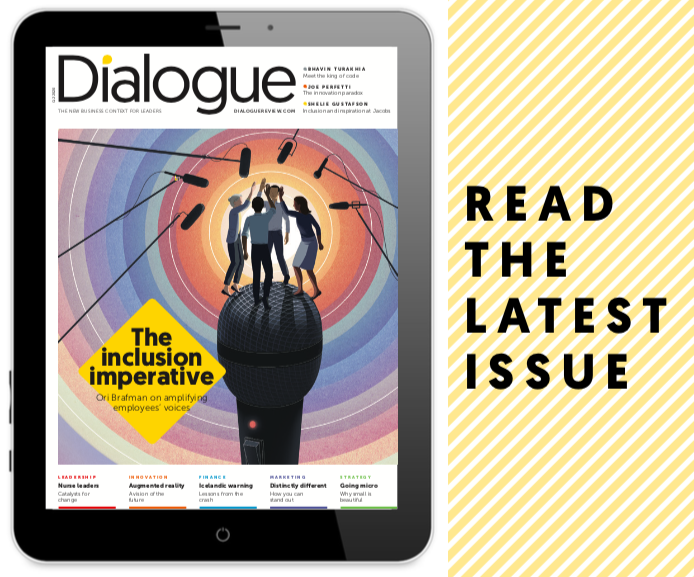Here is what you can expect, from the desk of Dialogue editor, Patrick Woodman
[button type=”large” color=”black” rounded=”1″ link=”https://issuu.com/revistabibliodiversidad/docs/dialogue_q2_2020_full_book” ]READ THE FULL GRAPHIC VERSION[/button]
I recently learned to drive. Yes: in my late 30s, a happy devotee of London’s public transport and cycle networks, I have had to accept that automated vehicles aren’t going to arrive on the market quite in time for me to avoid the need for a driving licence. Passing the test has exposed me to the full ‘backseat driver’ experience. Most drivers will tell you that the last thing they want is someone passing judgment on their performance, offering dissent on every critical decision and distracting from the task at hand. One driver is quite enough.
But can the same be said for those at the wheel in today’s organizations? Businesses today find that the old rules of the road have broken down. The road itself has radically changed, smooth tarmac replaced by a bumpy, unmarked dirt track: technological disruption and hyper-competitive markets mean that things can change in an instant. There’s more happening than one person can process. The chances of avoiding a crash are dramatically boosted by having a second pair of eyes on the road, and a second opinion on the twists and turns that lie ahead.
That, in essence, is the argument for inclusion, the subject of this issue’s Focus section. As Ori Brafman makes clear in our cover feature, inclusion shouldn’t be seen as a ‘nice to have’, or even an ethical obligation, the little sibling of diversity. It’s an essential condition for business success in the turbulent 21st century. Organizations need everyone to engage with the challenges the business faces; leaders have to create the conditions for people to express their views with confidence that their ideas will be heard, acknowledged, and valued. As Dan Robertson explains, leaders have a particular obligation to ensure their behaviour doesn’t undermine psychological safety.
One firm in the process of transforming its culture on the basis of inclusion is Jacobs: dive into our feature from its chief HR officer, Shelie Gustafson. We take a wider look at the inclusion practices of a number of organizations around the world, examining how businesses are going beyond diversity to create inclusive cultures – a theme picked up by Sharmla Chetty in her insightful guide for leaders.
Elsewhere, be sure to read our interview with the serial entrepreneur, Bhavin Turakhia, for insights on the makings of a tech disruptor. Joe Perfetti looks at the innovation paradox facing market incumbents in the face of disruptive threats, and offers a guide to breaking free. For fans of new technology, we have David Rose and Hari Nair’s guide to augmented reality (AR) and how firms can experiment to explore AR’s potential.
Meanwhile, Elsbeth Johnson examines the four delusions that often afflict leaders as they try to implement change – from misguided belief in their own star power, to focusing on the wrong things for embedding lasting change. Make sure you’re not falling foul with her analysis.
I’m also delighted to welcome our new Last Word columnist, the renowned coach and educator Sanyin Siang, who offers a fascinating take on the notion of ‘belonging’. In a globally mobile world, it might just be ‘outsiders’ who are best placed to create inclusion and inspire people to bring their full selves to work. Forget robot-driven cars: that’s a vision of the future we can all believe in.
Enjoy the issue.

